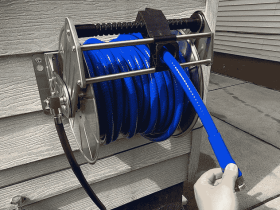Pavers are considered to be one of the integral parts of any landscape. It does not matter if they are assimilated in the floor or in the fire pit or in the countertops, installing them means it has some great purpose, and hence it is very important for all of us to maintain the decorum, and keep the pavers strong and healthy so that it lasts for a healthy time. And to meet this purpose, one should hire professional deck builders as they make sure that the pavers are installed in such a way that the coming generations can enjoy the beauty and function of this structure.
If one sees the pavers of streets in Midwestern and New England towns, which were originally installed more than a century ago, one would be amazed to see the maintenance and its beauty. Earlier, the most used type of paver was the clay paver. Be it the centralized community paver or the long private driveway, the well-installed pavers create an outdoor space for families and friends and create some memorable moments. Nowadays, Brick Paver Installers are considered to be one of the best options.
Below mentioned are some of the major points that one should definitely consider while installing the pavers to have a successful project of paver installation:
1) Foundation should be solid
a) This is the base for the longevity of the pavers. The selection of apt materials and proper installation will lay a strong base for the paver and it shall remain durable for a longer period of time. Getting inspired by several historic locations, it is understood that the strength of brick pavers is unmatched. They are easy to maintain but the only issue is that they fade away with time.
b) The style of pavers also plays an important role. The rectangular shape fits more perfectly than the round-shaped pavers. Also, the bigger size pavers set more intensely than the smaller size pavers.
c) The pattern of installation is again a crucial point that strengthens the hold of pavers together. The installations with linear joints are considered to be weak and it loosen when regular pressure is applied over it by walking or running. The classic herringbone structure is considered to be one of the strongest patterns.
2) Consider the weather factor
a) Most of the paver materials are such that they can easily withstand any kind of weather conditions, be it extremely hot or extremely cold. After making a strong foundation, the builders need to make sure that the right base materials should be properly compacted. Some of the pavers also have a fabric substrate beneath them to ensure the stability of the base.
b) Also, one should look into the detailing of the edges of the pavers. The brick paver system is considered to be one of the flexible paver materials which easily loses its shape if its edges are not stacked properly or are compromised while creating a base. Thus, it is very important to ensure that they are bonded very strongly over the edges.
c) It is very important to look for such products which have passed the color fastness test, weather resistance, and also durability, especially in the case of concrete pavers. Also, the concrete pavers outperform asphalt and solid concrete in both the factors of low absorption rate and high compressive strength.
d)Also, one needs to take care of the edges of the pavers which do chip off very often, so if one is using any tool to remove the snow from the pavement area then one should always use the rubber-tipped shovel or plow which would save the edges from chipping off.
3) Focus on the finishing methods
The general finishing practice after a paver installation is to sweep the sand into the joints of the pavers. This method secures the pavers but with very flexible paver joints which accustoms itself as per the environmental or external pressure.
The usual joint sand washes away after some time which should be replenished from time to time. Or else one can use an option of polymeric sand which holds a strengthening bond between the pavers.
4) What to avoid during the installation process
a) The pavers should never ever be installed without a stand to prevent it from any kind of breakage and chipping off the edges.
b) Also, one needs to ensure that if the pavers are to be washed thoroughly then the nozzle of the source of water should be kept away from the edge of the pavers or else the joint sand will be removed.
5) Practicing regular maintenance
The owners should have a good understanding of the engineering processes involved in the paver installation. This would help them to logically understand what should be done and what should be avoided.
In case the pavers move from their place, then they can be brought back to their original position. If the edge of the paver is damaged or broken, then it can be just flipped and repaired by re-applying the joint.
The single broken piece of the paver can also be worn and used. In short, the installation person should give the owners a good understanding of how things are done so that he can foresee the changes accordingly.
Conclusion:
The above points conclude that the owners should be well-educated and have a good understanding of what has been done. The owner should also choose a good quality product with a warranty. The owners should be ensured to take continuous care of the pavement for its longevity. Thus, these points can definitely contribute to making the paver installation project a great success.











Leave a Review